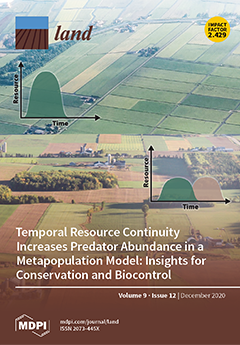Open AccessArticle
Drivers of Fire Anomalies in the Brazilian Amazon: Lessons Learned from the 2019 Fire Crisis
by
Marcus V. F. Silveira, Caio A. Petri, Igor S. Broggio, Gabriel O. Chagas, Mateus S. Macul, Cândida C. S. S. Leite, Edson M. M. Ferrari, Carolina G. V. Amim, Ana L. R. Freitas, Alline Z. V. Motta, Luiza M. E. Carvalho, Celso H. L. Silva Junior, Liana O. Anderson and Luiz E. O. C. Aragão
Cited by 50 | Viewed by 8361
Abstract
The 2019 fire crisis in Amazonia dominated global news and triggered fundamental questions about the possible causes behind it. Here we performed an in-depth investigation of the drivers of active fire anomalies in the Brazilian Amazon biome. We assessed a 2003–2019 time-series of
[...] Read more.
The 2019 fire crisis in Amazonia dominated global news and triggered fundamental questions about the possible causes behind it. Here we performed an in-depth investigation of the drivers of active fire anomalies in the Brazilian Amazon biome. We assessed a 2003–2019 time-series of active fires, deforestation, and water deficit and evaluated potential drivers of active fire occurrence in 2019, at the biome-scale, state level, and local level. Our results revealed abnormally high monthly fire counts in 2019 for the states of Acre, Amazonas, and Roraima. These states also differed from others by exhibiting in this year extreme levels of deforestation. Areas in 2019 with active fire occurrence significantly greater than the average across the biome had, on average, three times more active fires in the three previous years, six times more deforestation in 2019, and five times more deforestation in the five previous years. Approximately one-third of yearly active fires from 2003 to 2019 occurred up to 1 km from deforested areas in the same year, and one-third of deforested areas in a given year were located up to 500 m from deforested areas in the previous year. These findings provide critical information to support strategic decisions for fire prevention policies and fire combat actions.
Full article
►▼
Show Figures





